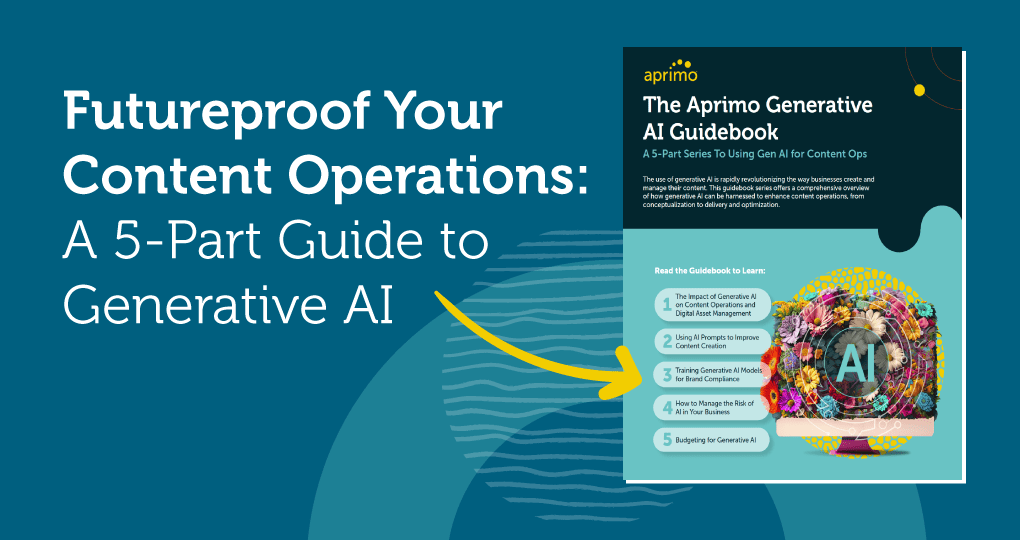Content Ops in the Food and Beverage Industry: Managing Appetizing Visual Content

Part of the allure of dining out isn’t just in the taste of the food but also in its presentation. The adage “you eat with your eyes first” rings particularly true. Because of this, managing consistently appealing visual content is vital for attracting customers in a world where a dish’s visual appeal can be as important as its flavor. However, organizing and managing all the visual content required to market effectively in the food and beverage industry can be challenging. That’s where content operations come in.

Introduction to Content Ops in the Food and Beverage Industry
So, what is content ops? Also known as content operations, content ops involves a strategic approach to creating, managing, and distributing visual content that entices an audience. Every image tells a story, from the glistening glaze on a freshly baked pastry to the vibrant colors of a mixed salad. Properly managing this visual story directly influences customer engagement and decision-making.
Connecting with customers through appealing visuals goes beyond aesthetics, though. It also communicates quality, care, and a brand’s unique experience.
Challenges in Visual Content Management
Effectively managing visual content in the food and beverage industry involves navigating several challenges:
-
Resource constraints: For many businesses, especially smaller ones, finding enough money, time, and skilled workers to create and manage quality content is a considerable challenge.
-
Aligning with customer expectations: Today’s consumers expect visual content to be attractive and true to the product. Not meeting these expectations can result in customer dissatisfaction and negatively impact a brand’s reputation.
-
Cross-platform integration: Managing content across different channels, such as websites, social media, and print media, requires adapting the content to each platform’s unique requirements and audience preferences. Failing to adapt content can convey a sense of clunky sloppiness, which a consumer could believe carries over into the food.
-
Performance analysis: Continuously analyzing which content resonates best with an audience is crucial for refining content strategy. This involves effectively using analytics tools and a solid understanding of key performance metrics.


Key Elements of Effective Content Ops
Effective content ops in the food and beverage industry hinges on several key elements:
-
A centralized content hub: This is essential for managing digital assets and helps everyone quickly access and update all content, like photos and videos. This system streamlines content management and helps maintain brand consistency.
-
A collaborative workflow: Seamless teamwork among marketing, creative, and operations teams is key. It creates content that is not only visually appealing but also in line with marketing goals and business objectives. Effective communication and collaboration tools are crucial for this process.
-
Digital Asset Management (DAM) tools: Digital asset management is vital for efficiently managing a large volume of visual content. It assists in organizing and categorizing content, simplifying the process of finding and reusing assets.
Optimizing Visual Content for Search Engines
Search engine optimization (SEO) uses various techniques that help search engines understand and prioritize search results. Effectively optimizing visual content helps consumers find what they’re looking for and draws them toward a food and beverage business with offerings that meet their needs.
Keywords and metadata are at the heart of this optimization. Using the right keywords in image file names, alt text, and descriptions helps search engines understand what the image is about and show it in relevant searches.
Image optimization is also crucial for better visibility in search results. This means balancing high-quality images with file sizes that load quickly on websites. Making images responsive so they look good on different devices and screen sizes also improves their performance in search results.


Technology Solutions for Content Ops in F&B
The food and beverage industry can benefit significantly from various technology solutions to enhance content operations. These solutions not only streamline processes but also elevate the quality and effectiveness of content marketing efforts. DAM systems, SEO and analytics tools, and email marketing platforms help put effective content in front of consumers to keep them returning to a restaurant.
Take the famous Sugarfish Sushi, for example. Aside from offering uniquely curated sushi dishes, they display highly enticing images throughout their website. But it doesn’t stop there. Sugarfish keeps in contact with its past customers through an active email campaign and newsletter that promotes specials, offers updates, and presents on-brand imagery that reminds customers why they went there in the first place and encourages them to return.
Measuring Success: Analytics and KPIs
Key performance indicators (KPIs) in content ops can vary depending on the specific goals of a campaign. Common KPIs include:
-
Engagement rates: These measure interactions such as likes, shares, and comments on visual content. Higher rates indicate better audience resonance.
-
Website traffic driven by content: This tracks the number of visitors to your website resulting from your visual content.
-
Conversion rates: The percentage of viewers taking a desired action, like calling in for a reservation or ordering takeout, after viewing content.
-
View counts: This counts how many times visual content has been viewed. High counts indicate popularity and broad reach.
-
Time spent on page: This measures how long viewers stay on a page with your content. Longer durations suggest engaging content.





